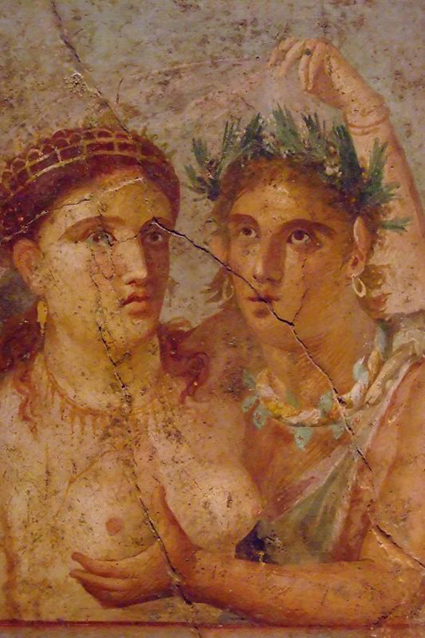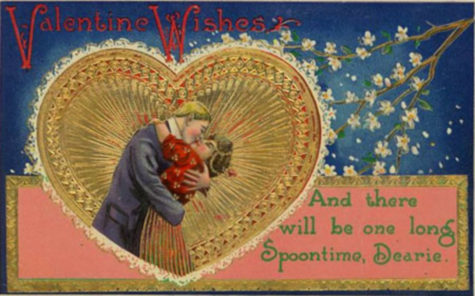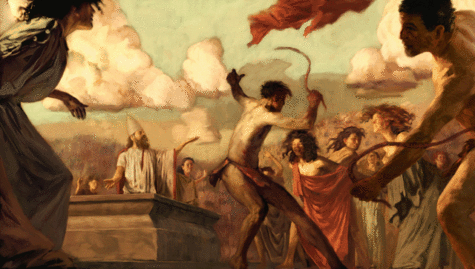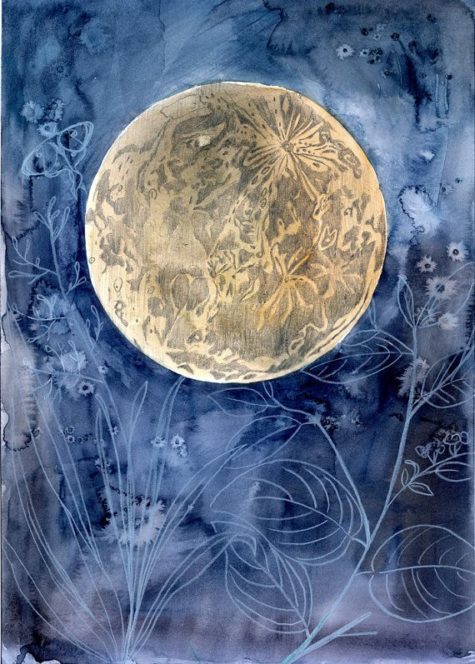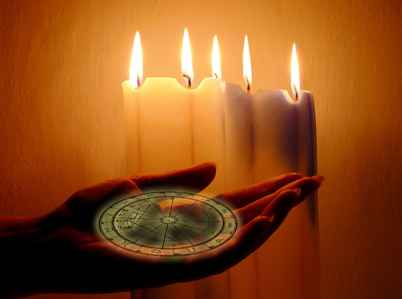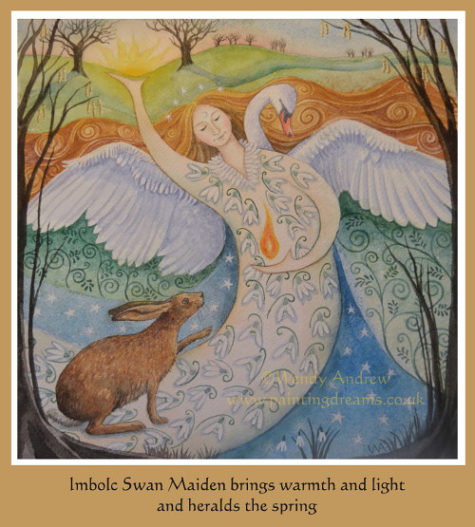February
What follows is a list (in alphabetical order) of the names given to the February moon. Also listed is the tradition and/or origin of that moon name:
- Avunnivik Moon ~Inuit
- Big Winter Moon ~other
- Bony Moon ~Cherokee
- Chaste Moon ~other
- Cleansing Moon ~other
- Coyote Frighten Moon ~San Juan
- Dark Storm Moon ~Janic
- Geese Moon ~Omaha
- Gray Moon ~Pima
- Horning Moon ~other
- Hunger Moon ~Janic, Algonquin
- Ice Moon ~Celtic
- Lateness Moon ~Mohawk
- Little Bud Moon ~Kiowa
- Little Famine Moon ~Choctaw
- Long Dry Moon ~Assiniboine
- Nuts Moon ~Natchez
- Old Moon ~Cree
- Purification Moon ~Hopi
- Running Fish Moon ~Winnebago
- Quickening Moon ~other
- Rabbit Moon ~Potawatomi
- Raccoon Moon ~Sioux
- Red Moon, ~other
- Shoulder Moon ~Wishram
- Snow Moon ~Neo-Pagan, Algonquin
- Solmonath Moon ~other
- Sparkling Frost Moon ~Arapaho
- Spruce Tips Moon ~Passamaquoddy
- Storm Moon ~Medieval English
- Sucker Moon ~Anishnaabe
- Trapper’s Moon ~Algonquin
- Trees Pop Moon ~Sioux
- Wild Moon ~other
- Wind Moon ~Creek
- Winter Moon ~Taos
- Wolf Moon ~other
Correspondences for February
- Nature Spirits: house faeries, both of the home itself and of house plants
- Herbs: balm of Gilead, hyssop, myrrh, sage, spikenard
- Colors: light blue, violet
- Flowers: primrose
- Scents: wisteria, heliotrope
- Stones: amethyst, jasper, rock crystal
- Trees: rowan, laurel, cedar
- Animals: otter, unicorn
- Birds: eagle, chickadee
- Deities: Brigit, Juno, Kuan Yin, Diana, Demeter, Persephone, Aphrodite
Power Flow: energy working toward the surface; A good time for spell work on purification, growth, healing. Loving the self. Accepting responsibility for past errors, forgiving yourself, and making future plans.
About The Month of February
February was named for the Roman goddess Februa, mother of Mars. As patroness of passion, she was also known as Juno Februa and St. Febronia from febris, the fever of love. Her orgiastic rites were held on February 14th, St.Valentine’s Day. In Norse traditions, she is equated with Sjofn.
The Irish called this month Feabhra or an Gearran, the gelding or horse. The horse was used to draw the plough, but Gearran also means ‘to cut’ and ‘Gearran’ can be used to describe the ‘cutting’ Spring winds. To the Anglo-Saxons, this was Solmonath, “sun month,” in honor of the gradual return of the light after the darkness of winter. According to Franking and Asatru traditions, this month is Horning, from horn, the turn of the year.
The first full moon of February is called the Quickening Moon. It shares the titles Snow Moon with January and November, Wolf Moon with January and December, and Storm Moon with March and November. February’s Moon is also called the Hunger or Hungry Moon, and it has been called the Ice, Wild, Red and Cleansing, or Big Winter Moon.
The month of February, truly a month of ice in many parts of the Northern Hemisphere, is a dormant time, when all activity and life appears to be low-key or below the surface movement. In both the Celtic and Roman cultures, it was a time of spiritual purification and initiation. The country of Tibet celebrated the conception of Buddha and the Feast of Flowers during this time of year.
Aquarius and Pisces share power over February, with Pisces taking over around the 19th of February. Violet is the flower for those born in February. Though hyacinth and pearl appear on some lists, amethyst is the jewel for those born in this month and for Pisces, while aquamarine is the stone for Aquarians. Other stones associated with Aquarius are chrysoprase, garnet, labradorite, lapis lazuli, and opal. Albite, aquamarine, chrysoprase, fluorite, green tourmaline, labradorite, moonstone, and opal are linked to Pisces.
February can be an ideal time for dedicating or re-dedicating oneself to whatever deity or deities one worships. It is also a wise practice to cleanse and purify yourself, your dwelling place, and even your property lines before the dedication. Purifying changes the vibrations by removing negative ones and inviting in positive ones. The month of January was a time of ending old cycles and preparing for new ones. February prepares the environment and the body, mind, and spirit for receptivity of new spiritual and life experiences.
February Celebrations:
Hatun-pucuy, or the Great Ripening, was celebrated among the Incas.
The Lesser Eleusinian Mysteries of Greece was also called the Festival of the Returning Daughter. This was a celebration of the Kore’s return from the Underworld and the rebirth of earthly vegetation. This ceremony, unlike the Greater Eleusinian, was open to many people and was a time of initiation into the lower Mysteries. Initiation into the Lesser Eleusinian Mysteries was open to all free men and women who were not guilty of murder and similar crimes. All initiates were bound by an oath of silence so effective that the secrets of the mysteries were never told. Today we know very little about the actual ceremonies, except what was performed in full public view.
Kuan Yin is the Great Goddess of the Oriental people. She has been known to offer her aid primarily to women and girls, but there is no reason why men cannot honor her and ask her help. She is said to guide lost travelers, protect from attack by humans or animals, bless a family with children, and heal. She is called the Compassionate and is revered for her wisdom and love. Oriental women offered oranges and spices before her statues.
The Roman Lupercalia festival was a time of purification and fertility. A priest of the god Pan signaled the beginning of the Lupercalia with sacrifices of a goat and a dog. The skins of these animals were made into whips which chosen young boys used to strike people, particularly barren women. This was thought to bring good luck in conceiving and having a healthy baby. It is quite possible that our present Valentine’s Day has seeds of its beginnings in this ritual.
The Roman Parentalia and Feralia celebrations were a time to honor the ancestors. It was a period of solemnity with no feasting or marriages; all the temples were closed. Houses were cleaned thoroughly and food offerings made to the spirits of the dead. The goddesses Mania and Vesta were honored with solemn rituals.
The priestesses of Vesta (the Vestal Virgins) were accorded great respect and trust. They kept the wills of the citizens of Rome and saw that they were properly fulfilled when the maker died. At a word or appearance of any Vestal, any condemned criminal was set free without question or argument.
Later in the month, the festival of Carista was held as a family celebration for peace and accord. This festival was known as the Concordia. Condordia, or Caristia, was the goddess of harmony. It was a time for exchanging gifts with family members and resolving problems. Differences and feuds were not to be carried within the family beyond this date.
The Roman god Terminus was the deity of land boundaries. His festival was the Terminalia. Boundary stones marking the property lines were anointed and blessed by the head of the household. This ceremony is rather like the one honoring the household guardians, as the Nature spirits residing in the boundary stones were asked for protection and prosperity for the land and family. This ritual could be adapted for today by blessing the boundaries of your property, stones or not.
Sources: Moon Magick and Angelfire
In Bali, the last day their 210 day Saka calendar marks the Balinese feast of purification. This is the time of the year when the lord of hell cleans out his underworld lair, and all manner of demons and evil spirits are left to roam Bali free.
During this time….when evil is afoot……the natives go to elaborate lengths to purify both their individual homes as well as the island. No corner or stone is left untouched as rites of purification and spells for protection are recounted
On this Saka New Year’s Eve, it is all blaring noise and merriment. Every Balinese household starts the evening with blessings at the family temple and continues with a ritual called the pengrupukan where each member participates in ‘chasing away’ malevolent forces, known as bhuta kala, from their compounds – hitting pots and pans or any other loud instruments along with a fiery bamboo torch.
These ‘spirits’ are later manifested as the ogoh–ogoh to be paraded in the streets. As the street parades ensue, bamboo cannons and occasional firecrackers fill the air with flames and smoke. The Nyepi Eve parade usually starts at around 19:00 local time.
This date varies from year to year, in 2019, it falls on March 6. It is based on the Saka calendar of western Indian origin, one among the many calendars assimilated by Indonesia’s diverse cultures. The Saka is 78 years behind the Gregorian calendar, and follows a lunar sequence.
If you’d like to honor this tradition, here is a simple house cleansing ritual:
You will need a broom, some sea water, or rain water with some sea salt dissolved in it, and an Asperger (optional). Open all the windows and doors in your house and starting from the center sweep the whole house. Move Deosil (clockwise) as much as possible. As you go, visualize all negativity as a wispy grey cloud which you are driving out through the windows and doors.
Now take your salt water (and Asperger if you have one) and sprinkle the salt water around the boundaries of your whole home, making sure that you include the sills of all the doors and windows. Be very careful not to make everything too wet, or to sprinkle any electrical equipment, switches or sockets, etc.
As you do each door or window say: “I mark this boundary that no negativity be allowed to enter here. Blessed be.” and then close it.
If the weather is really inclement you may need to work room by room rather than doing the whole house in one go. In this case make sure you cover the boundaries between rooms and any passageways, stairs, etc. without windows.
Note: This house cleansing ritual can be used at any time.
Whenever you move into a new home it is as well to cleanse it to remove any residual negative energies which may have been left behind by the previous occupants. You may also like to do this after any period of upset in your home to thoroughly drive out the problem, or if you have been visited by someone who seems to have left some of their negativity behind them.
Sources:
Valentine’s Day has its roots in ancient orgiastic festivals. On February 14, The Romans celebrated Febris (meaning fever), a sacred sexual frenzy in honor of Juno Februa, an aspect of the goddess of amorous love. This sex fest coincided with the time when the birds in Italy were thought to mate.
The ecstatic rites of the Goddess merged over time with those of Lupercalia, the bawdy festivities in honor of the pagan god of sex, drugs and rock-n-roll, Pan, which were observed on the following day, February 15.
On Lupercalia, (named, incidentally, in honor of the she-wolf who suckled Romulus and Remus), men and women inscribed their names on love notes or billets and then drew lots to determine who their sex partner would be during this anything goes festival of erotic games.
Sulpicia, a first century BC Roman poet, describes her participation in the events with hearty candor:
“At last love has come. I would be more ashamed
to hide it in cloth than leave it naked.
I prayed to the Muse and won. Venus dropped him
in my arms, doing for me what she
had promised. Let my joy be told, let those
who have none tell it in a story.
Personally, I would never send off words
in sealed tablets for none to read.
I delight in sinning and hate to compose a mask
for gossip. We met. We are both worthy.”
Roman armies took their Lupercalia customs with them as they invaded France and Britain. One of these was the above mentioned lottery where the names of available maidens were placed in a box and drawn out by the young men. Each man accepted the girl whose name he drew as his love – for the duration of the festival, or sometimes longer.
Lupercalia, with its lover lottery, had no place in the new Christian order. In the year 496 AD, Pope Gelasius did away with the festival of Lupercalia, citing that it was pagan and immoral. He chose Valentine as the patron saint of lovers, who would be honored at the new festival on the fourteenth of every February. The church decided to come up with its own lottery and so the feast of St. Valentine featured a lottery of Saints. One would pull the name of a saint out of a box, and for the following year, study and attempt to emulate that saint.
The Feast of St. Valentine and the saint lottery lasted for a couple hundred years, but the church just couldn’t rid the people’s memory of Lupercalia. In time, the church gave up on Valentine all together. The lottery finally returned to coupling eligible singles in the 15th century. The church attempted to revive the saint lottery once again in the 16th century, but it never caught on.
During the medieval days of chivalry, the single’s lottery was very popular. The names of English maidens and bachelors were put into a box and drawn out in pairs. The couple exchanged gifts and the girl became the man’s valentine for a year. He wore her name on his sleeve and it was his bounded duty to attend and protect her. The ancient custom of drawing names on the 14th of February was considered a good omen for love.
By the early 1600s, handmade valentines were customarily sent from admirers to sweethearts. About 1800 the first commercial cards appeared. Cards were usually sent anonymously. As early as 1822, an English official reported having to hire extra postal workers on this day. In 1849, Esther Howland of Worcester, Massachusetts, started selling quality valentines so popular that she was called “Mother of the American Valentine.”
Sources:
Lupercalia is uniquely Roman, but even the Romans of the first century were at a loss to explain exactly which deity or deities were being exalted. It hearkens back to the days when Rome was nothing more than a few shepherds living on a hill known as Palantine and was surrounded by wilderness teeming with wolves.
Lupercus, protector of flocks against wolves, is a likely candidate; the word lupus is Latin for wolf, or perhaps Faunus, the god of agriculture and shepherds. Others suggest it was Rumina, the goddess whose temple stood near the fig tree under which the she-wolf suckled Romulus and Remus. There is no question about Lupercalia’s importance. Records indicate that Mark Antony was master of the Luperci College of Priests. He chose the Lupercalia festival of the year 44BC as the proper time to offer the crown to Julius Caesar.
February occurred later on the ancient Roman calendar than it does today so Lupercalia was held in the spring and regarded as a festival of purification and fertility. Each year on February 15, the Luperci priests gathered on Palantine Hill at the cave of Lupercal. Vestal virgins brought sacred cakes made from the first ears of last year’s grain harvest to the fig tree. Two naked young men (called Lupercii) asisted by the Vestals, sacrificed a dog and a goat at the site. The blood was smeared on the foreheads of the young men and then wiped away with wool dipped in milk.
The Lupercii them skinned the sacrificed goat and ripped the hide into strips which they tied around their naked waists and led groups of priests around the pomarium, the sacred boundary of the ancient city, and around the base of the hills of Rome. The occasion was happy and festive.
They then got drunk, and ran around Rome striking everyone they met with strips of the goat hide. This act supposedly provided purification from curses, bad luck, and infertility. Young women who were touched in this manner were thought to be specially blessed, especially in regards to fertility and procreation.
It is from these implements of purification, or februa, that the month of February gets its name.
Long after Palentine Hill became the seat of the powerful city, state and empire of Rome, the Lupercalia festival lived on. Roman armies took the Lupercalia customs with them as they invaded France and Britain. One of these was a lottery where the names of available maidens were placed in a box and drawn out by the young men. Each man accepted the girl whose name he drew as his love – for the duration of the festival, or sometimes longer.
Lupercalia, with its lover lottery, had no place in the new Christian order. In the year 496 AD, Pope Gelasius did away with the festival of Lupercalia, citing that it was pagan and immoral. He chose Valentine as the patron saint of lovers, who would be honored at the new festival on the fourteenth of every February. The church decided to come up with its own lottery and so the feast of St. Valentine featured a lottery of Saints. One would pull the name of a saint out of a box, and for the following year, study and attempt to emulate that saint.
If you are interested, you can read more about Valentine’s Day (and how it came to be what it is today) on it’s own separate page.
A modern approach to the Lupercalia is as follows:
- Themes: Love; Passion; Romance; Sexuality
- Symbols: Doves; Flowers; Berries; Trees; Pine Cones
- Presiding Goddess: Venus
About Venus:
Venus was originally an Italic goddess of blossoms; hearts and flowers have slowly become attributed to her loving, passionate energies. In fact, her name became the root for the word venerate – to lift up, worship, or esteem. So it is that Venus greets pre-spring efforts for uplifting our hearts with positive relationships.
To Do Today:
During Lupercalia, an ancient predecessor of Valentine’s Day, single girls put their names in a box, and unmarried men drew lots to see with whom they would be paired off for the coming year. To the more modern minded, try pinning five bay leaves to your pillow instead to dream of future loves. If you’re married or otherwise involved, steep the bay leaves in water and drink the resulting tea to strengthen the love in your relationship.
To encourage balance in a relationship, bind together Venus’s symbols, a pine cone and a flower, and put them somewhere in your home. Or, to spice up a passionate moment, feed fresh berries to each other and drink a berry beverage from one cup (symbolizing united goals and destinies).
In Roman tradition, anywhere there’s a large stone adjacent to a tall tree, Venus is also there. Should you know of such a place, go there today and commune with her warm lusty energy.
Sources:
The full moon in February is known as the Quickening moon, it marks the official end of winter, and the quickening, the renewal of all things. While the skies are still gray, and the weather is cold, beneath the surface life begins to secretly stir.
This moon phase is a time of abundance, ripening and completeness, heavy with fertility and female divinity. It is a time when the potential of all things begins to stir towards birth in spring, a time to work on our own inner power and confront personal truths in preparation for birth. This moon sheds enough light to help us see into our darkness, so that our energy can make its way to the surface to prepare for growth and healing.
This is the season of Imbolc, the days when we know that if we can just hold on for a few more weeks, we might get lucky and see little green shoots peeking out through the snow and slush.
Correspondences:
- Colors: Purple and blue
- Gemstones: Rose quartz, amethyst, jasper
- Trees: Rowan, Myrtle
- Gods: Brighid, Aphrodite, Juno, Mars
- Herbs: Hyssop, sage, myrrh
- Element: Fire
The word Quickening is also used to describe the first moment in pregnancy when a woman feels the movements of her baby. So too, this a time when new life is beginning, but still lies dormant. Pregnant animals, due in the spring, begin to feel the quickening of their unborn young. The earth itself is quickening, as seeds and bulbs far beneath the soil begin their journey towards the light. We know these things are coming — and we know also that this is a good month to make plans for the future. We can dream and hope, and set goals for ourselves. Accept responsibility for mistakes you’ve made in the past, and move on.
Magical workings this month should focus on personal achievements and advancement. This is an excellent time for fertility and childbirth spells.
From various sources
It’s no accident that Groundhog Day and Candlemas are celebrated together, for both signify the triumph of light over darkness, spring over winter. Candlemas was originally a Celtic festival marking the “cross-quarter day,” or midpoint of the season. The Sun is halfway on its advance from the winter solstice to the spring equinox.
Candlemas is the Christianized name for Imbolc, and all of the church candles are blessed for the year. The Virgin Mary is also honored. Today, this holiday is chiefly connected to weather lore. Even our American calendar keeps the tradition of Groundhog Day, a day to predict the coming weather. The Groundhog Day tradition tells us that if the Groundhog sees his shadow, there will be six more weeks of bad weather. An old British rhyme instructed:
If Candlemas day be fair and bright,
Winter will have another flight.
If Candlemas day be shower and rain,
Winter is gone and will not come again.
We pagans see the God as an infant during the time of Imbolc, and he is nursing from the Goddess and growing in power. It is the time for banishing Winter. We gather together the greens that adorned our homes during the Yule, and then we add these greens to the Imbolc fire. We chant and dance saying “We banish Winter! We welcome Spring!”
We light candles in each window and let them burn throughout the night. It is also an appropriate time for dedicating yourself to the Pagan path and purifying your home. You can also make candles for the coming year and consecrate new ritual items.
The Christian church expanded this festival of light to commemorate the purification of the Virgin Mary and her presentation of the infant Jesus in the Temple. Candlelit processions accompanied the feast day.Since the traditional Candlemas celebration anticipated the planting of crops, a central focus of the festivities was the forecasting of either an early spring or a lingering winter.
Sunshine on Candlemas was said to indicate the return of winter. Similarly:
“When the wind’s in the east on Candlemas Day
There it will stick till the second of May.”
A bear brought the forecast to the people of France and England, while those in Germany looked to a badger for a sign. In the 1800s, German immigrants to Pennsylvania brought their Candlemas legends with them. Finding no badgers but lots of groundhogs, or woodchucks, there, they adapted the New World species to fit the lore. Today that lore has grown into a full-blown festival, with Punxsutawney Phil presiding. For all things groundhog, visit the folks at Punxsutawney and see what Phil is predicting this year.
Sources: Almanac.com and Rose Ariadne
Celebrated on February 2nd, Imbolc or Imbolg, (pronounced “IM-bulk” or “EM-bowlk”), also called Oimealg, (“IM-mol’g), by the Druids, is the festival of the lactating sheep. It is derived from the Gaelic word “oimelc” which means “ewes milk”. Herd animals have either given birth to the first offspring of the year or their wombs are swollen and the milk of life is flowing into their teats and udders.
It is the time of Blessing of the seeds and consecration of agricultural tools. It marks the center point of the dark half of the year. It is the festival of the Maiden, for from this day to March 21st, it is her season to prepare for growth and renewal. Brighid’s snake emerges from the womb of the Earth Mother to test the weather, (the origin of Ground Hog Day), and in many places the first Crocus flowers began to spring forth from the frozen earth.
The Maiden is honored, as the Bride, on this Sabbat. Straw Brideo’gas (corn dollies) are created from oat or wheat straw and placed in baskets with white flower bedding. Young girls then carry the Brideo’gas door to door, and gifts are bestowed upon the image from each household. Afterwards at the traditional feast, the older women make special acorn wands for the dollies to hold, and in the morning the ashes in the hearth are examined to see if the magic wands left marks as a good omen.
Brighid’s Crosses are fashioned from wheat stalks and exchanged as symbols of protection and prosperity in the coming year. Home hearth fires are put out and re-lit, and a besom is place by the front door to symbolize sweeping out the old and welcoming the new. Candles are lit and placed in each room of the house to honor the re-birth of the Sun.
Another traditional symbol of Imbolc is the plough. In some areas, this is the first day of ploughing in preparation of the first planting of crops. A decorated plough is dragged from door to door, with costumed children following asking for food, drinks, or money. Should they be refused, the household is paid back by having its front garden ploughed up.
In other areas, the plough is decorated and then Whiskey, the “water of life” is poured over it. Pieces of cheese and bread are left by the plough and in the newly turned furrows as offerings to the nature spirits. It is considered taboo to cut or pick plants during this time.
As with all the Sabbats it is a time to celebrate the changes in the land around us. It is important to be outside to see, feel, smell, and appreciate the way that nature is changing, to pay our respects to the Gods and to seek their guidance for the coming season.
 You can either take a walk to a favorite place, where you will be able to appreciate the changes around you, or as this is a time of new beginnings, it can be interesting to take a new route. Whichever your choice, take with you a small amount of spring water, or collected rain water. As you go, take care to notice the signs of new life and growth and wherever you see new shoots, buds, or leaves sprinkle a few drops on the plant and give thanks to the Goddess.
You can either take a walk to a favorite place, where you will be able to appreciate the changes around you, or as this is a time of new beginnings, it can be interesting to take a new route. Whichever your choice, take with you a small amount of spring water, or collected rain water. As you go, take care to notice the signs of new life and growth and wherever you see new shoots, buds, or leaves sprinkle a few drops on the plant and give thanks to the Goddess.
If you should come across a well or a spring, take the time to make an offering to the waters within. If you have finished the water you brought then your offering should be something which will not contaminate the water in any way. Where a tree grows close to this water you can also tie a single hair to one of its branches and ask for a Blessing for yourself or someone close to you.
If you should be lucky enough to pass grazing land look out for the first lambs of the year. If you see your first lamb of the year on this day you can make a wish.
As this is a time of new life and growth, it is appropriate to plant bulbs or flowers or to sow seeds. However, you will need to use your judgement and some local knowledge to decide whether to actually do so at Imbolc or whether to wait a week (or several) until the last frosts have passed. Of course seeds can often be started indoors and planted out a month or so later.
A word of caution here – if you are unlucky and your seedlings or plants fail, try not to read anything ‘significant’ into this. Unless and until you are an experienced and seasoned gardener, or unless you naturally have ‘green fingers’ you are quite likely to have a less than impressive success rate the first few times.
If you don’t have access to a garden, you can always choose an indoor plant to nurture. Many of the herbs that Witches use in their Magic, as well as their kitchen, will grow quite happily on a window sill. Rosemary and lavender are perhaps the two most useful, as well as having a pleasant scent all year round.
Celebrating Imbolc can be as easy as saying a prayer or as complicated as doing an elaborate ritual. The thing to remember is that it be meaningful and done with intent. Remember also that the Imbolc season runs through the actual day of Imbolc until the Spring Equinox; if you miss the exact day, you haven’t missed out on celebrating. The following is a list of activities to do alone, with a partner, or with your child to honor nature and deity as we travel ever closer to spring. Continue reading
In Celtic times the day was considered to begin at dusk the preceding night, so all major celebrations would commence the night before the day of the festival, much as New Year festivities start on New Year’s Eve.
Also called Imbolg, Oimelc and Candlemas, this is the festival of Bride or Bridget. It celebrates the Goddess’s transformation from Crone to Maiden and heralds the coming Spring and the change from dark to light. One of the ways to celebrate this is with a Circle of lights.
The dates given for this sabbat vary. On some calendars it is given as Feb 1st and on others Feb 2nd. I think the confusion might possibly stem from this practice of commencing the celebration the night before.
Everyone gathers in a Circle, lit only by a single black candle; the wick should be trimmed to give the smallest of flames. Each person has an unlit white candle. When everyone is ready someone says:
“This is the festival of Imbolg and the first signs of returning life tell us that Spring is on its way.
Let us light the path for the new season and say farewell to the old.
Blessed Be.”
They light their white candle from the black one, state something they wish for in the coming season, and extinguish the black candle. Going around the group Deosil (clockwise), each person states their own hopes and lights their candle from that of the person next to them. When all the candles are lit, everyone says together:
“We welcome the Goddess as Maiden,
We welcome the signs of new life.
We welcome the coming Spring.”
The candles can be placed somewhere safe to burn whilst everyone enjoys a feast or, if this is not a family celebration, they may be extinguished and taken home to bring Spring into everyone’s homes.
From: The Real Witches’ Year
 Là Fhèill Brìghde is the day the Cailleach gathers her firewood for the rest of the winter. Legend has it that if she intends to make the winter last a good while longer, she will make sure the weather on February 1 is bright and sunny, so she can gather plenty of firewood to keep herself warm in the coming months. As a result, people are generally relieved if February 1 is a day of foul weather, as it means the Cailleach is asleep, will soon run out of firewood, and therefore winter is almost over.
Là Fhèill Brìghde is the day the Cailleach gathers her firewood for the rest of the winter. Legend has it that if she intends to make the winter last a good while longer, she will make sure the weather on February 1 is bright and sunny, so she can gather plenty of firewood to keep herself warm in the coming months. As a result, people are generally relieved if February 1 is a day of foul weather, as it means the Cailleach is asleep, will soon run out of firewood, and therefore winter is almost over.
Visit The Powers That Be for more information about the Cailleach,




